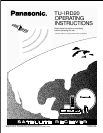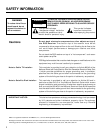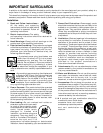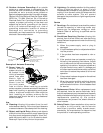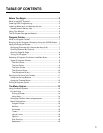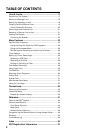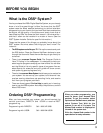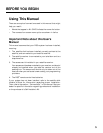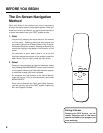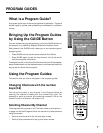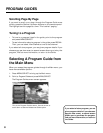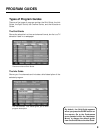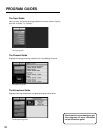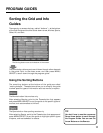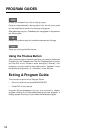
iii
16 Lightning—For added protection for this product
during a lightning storm, or when it is left
unattended and unused for long periods of time,
unplug it from the wall outlet and disconnect the
antenna or cable system. This will prevent
damage to the product due to lightning and power
line surges.
Service
17 Servicing—Do not attempt to service this product
yourself as opening or removing covers may
expose you to dangerous voltage or other
hazards. Refer all servicing to qualified service
personnel.
18 Conditions Requiring Service—Unplug this
product from the wall outlet and refer servicing
to qualified service personnel under the following
conditions.
A. When the power-supply cord or plug is
damaged.
B. If liquid has been spilled, or objects have fallen
into the product.
C. If the product has been exposed to rain or
water.
D. If the product does not operate normally by
following the operating instructions. Adjust
only those controls that are covered by the
operating instructions. Improper adjustment
of other controls may result in damage and
will often require extensive work by a qualified
technician to restore the product to its normal
operation.
E. If the product has been dropped or the cabinet
has been damaged.
F. When the product exhibits a distinct change
in performance, such as the inability to
perform basic functions—this indicates a need
for service.
19 Replacement Parts—When replacement parts
are required, have the service technician verify
that the replacement parts he uses have the same
safety characteristics as the original parts. Use of
replacements specified by the product
manufacturer can prevent fire, electric shock, or
other hazards.
20 Safety Check—Upon completion of any service
or repairs to this product, ask the service
technician to perform safety checks recom-
mended by the manufacturer to determine that
the product is in safe operating condition.
12 Outdoor Antenna Grounding—If an outside
antenna or cable system is connected to the
product, be sure the antenna or cable system is
grounded so as to provide some protection
against voltage surges and built-up static charges.
Section 810 of the National Electrical Code, ANSI/
NFPA No. 70-1984 (Section 54 of Canadian
Electrical Code, Part␣1) provides information with
respect to proper grounding of the mast and
supporting structure, grounding of the lead-in
wire to an antenna-discharge unit, size of
grounding conductors, location of antenna-
discharge unit, connection to grounding
electrodes, and requirements for the grounding
electrode. See example below.
Example of Antenna Grounding
13 Power Lines—An
outside antenna
system should not
be located in the
vicinity of overhead
power lines, other
electric light or
power circuits, or
where it can fall
into such power
lines or circuits. When installing an outside
antenna system, extreme care should be taken to
keep from touching or approaching such power
lines or circuits as contact with them might be
fatal. Installing an outdoor antenna can be
hazardous and should be left to a professional
antenna installer.
Use
14 Cleaning—Unplug this product from the wall
outlet before cleaning. Do not use liquid cleaners
or aerosol cleaners. Use a damp cloth for cleaning.
15 Object and Liquid Entry—Never push objects
of any kind into this product through openings as
they may touch dangerous voltage or “short-out”
parts that could result in a fire or electric shock.
Never spill liquid of any kind on the product.
ANTENNA
LEAD IN
WIRE
GROUND CLAMP
GROUNDING CONDUCTORS
(NEC SECTION 810-21)
GROUND CLAMPS
POWER SERVICE GROUNDING
ELECTRODE SYSTEM
(NEC ART 250, PART H)
ELECTRIC SERVICE
EQUIPMENT
ANTENNA
DISCHARGE UNIT
(NEC SECTION 810-20)



